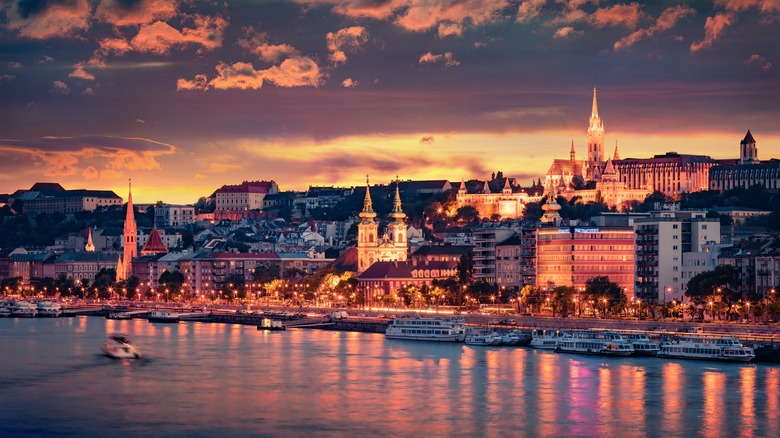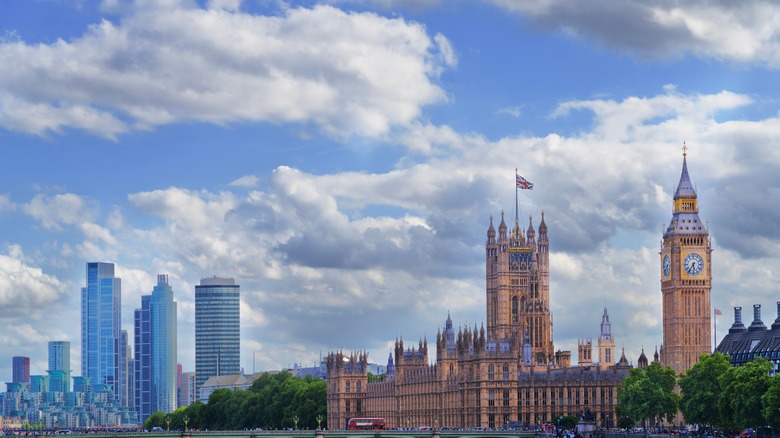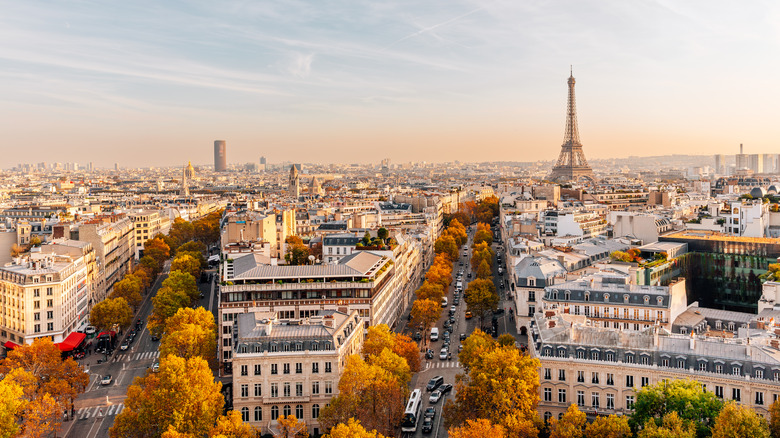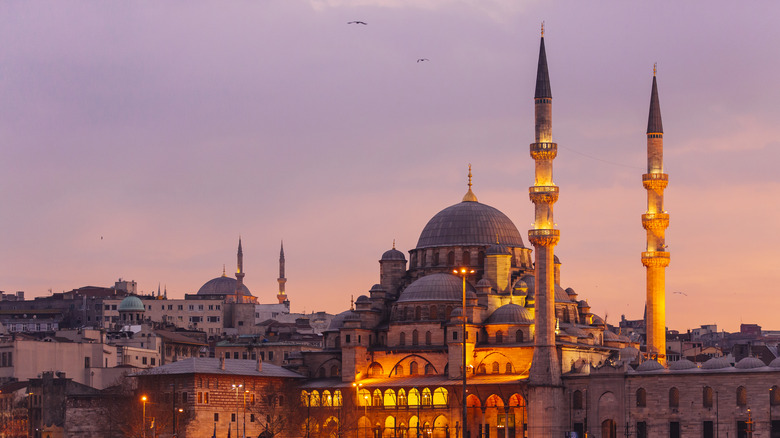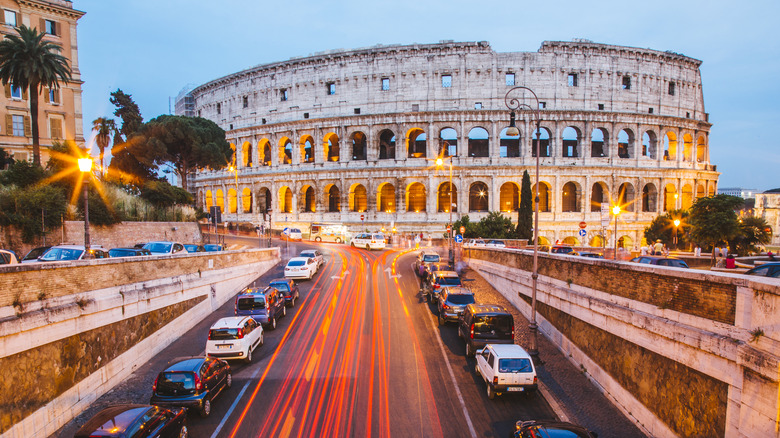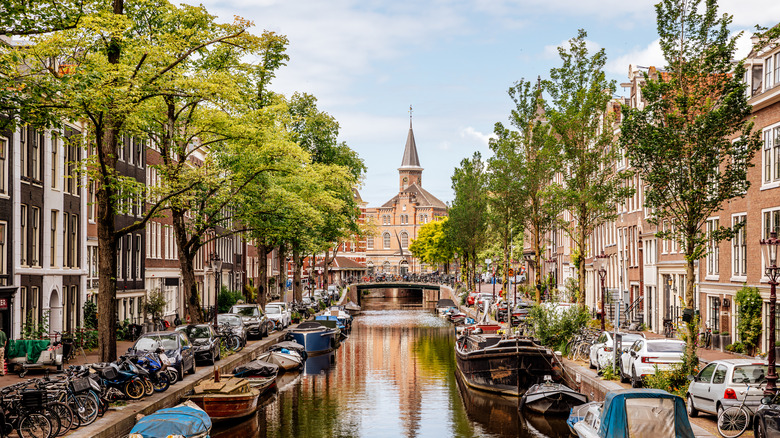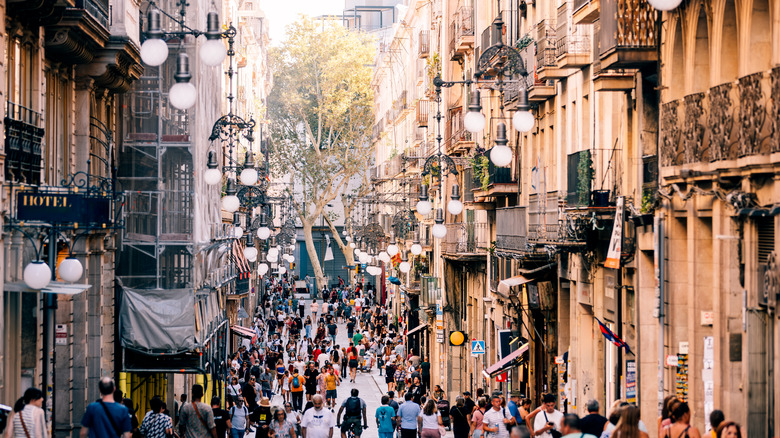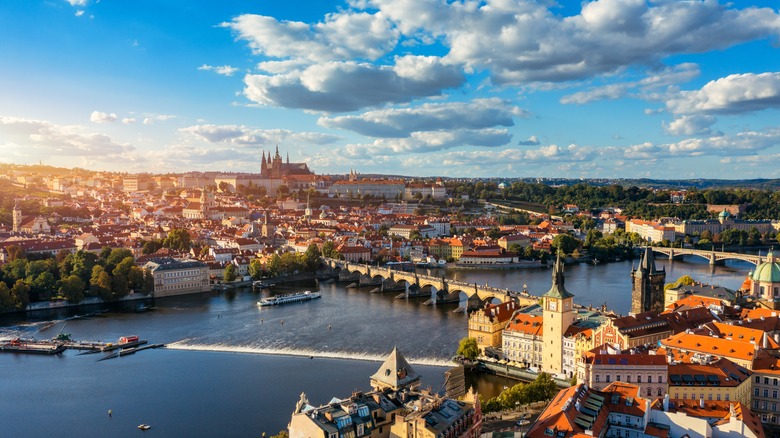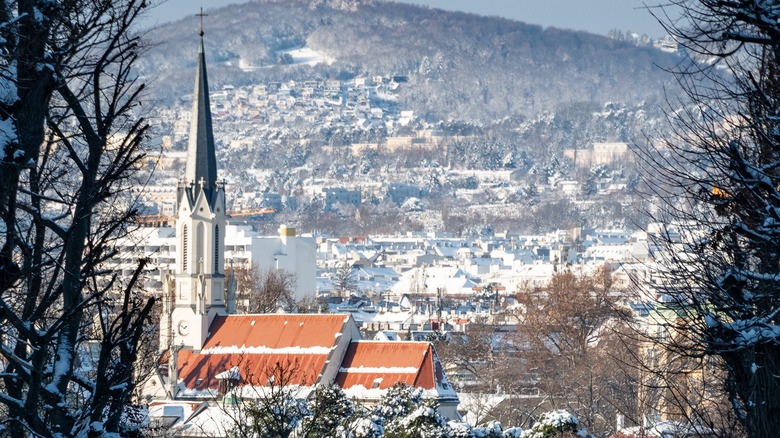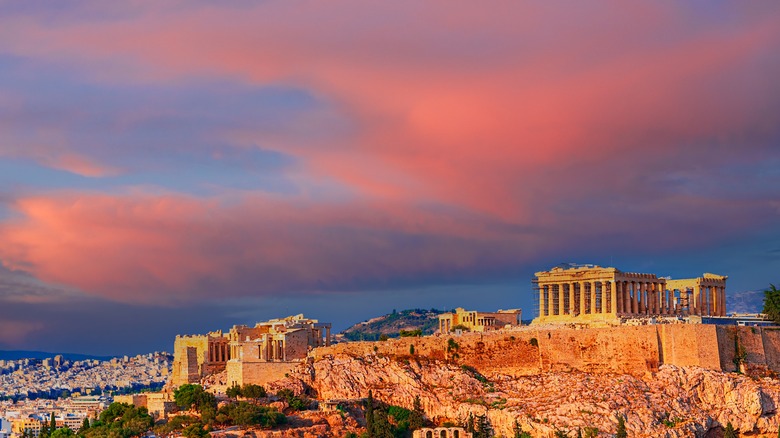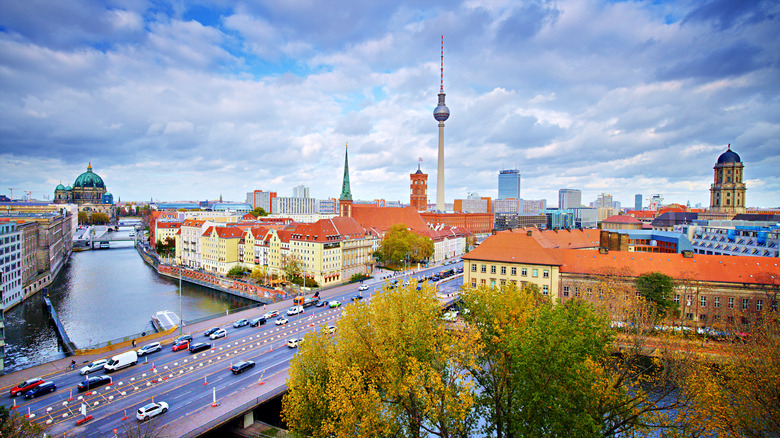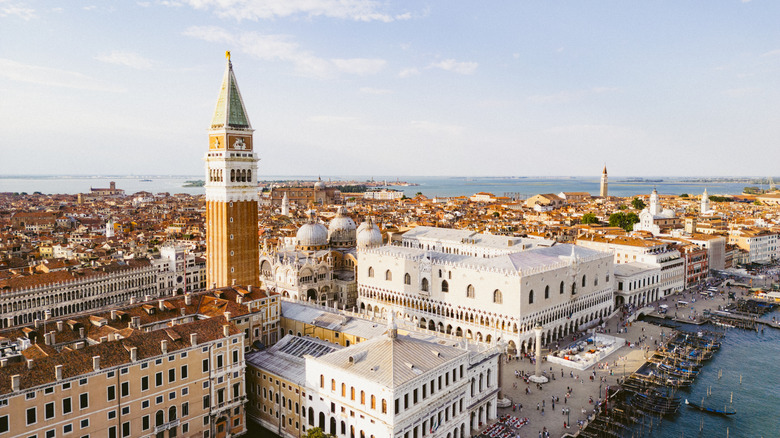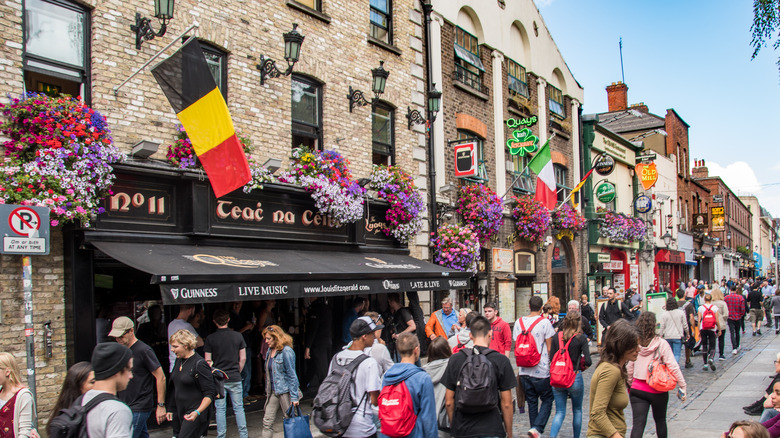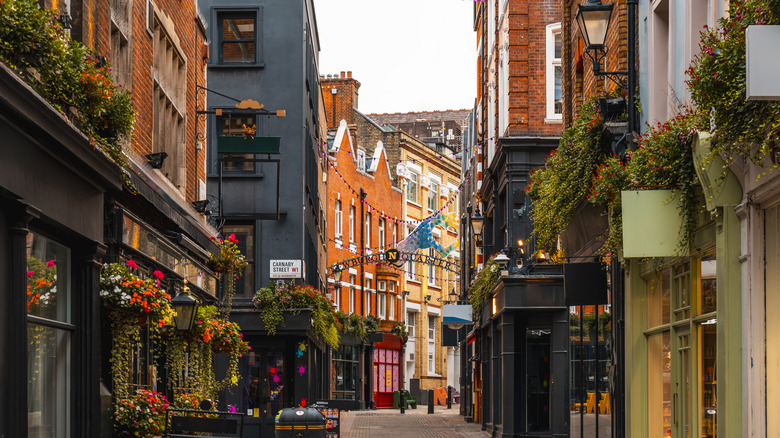12 Hidden Dangers In Europe's Most Popular Cities
Europe's cities are among the most popular and visited destinations in the world. Who hasn't dreamed of visiting Rome's most romantic spots? Who isn't fascinated by London? What foodie hasn't fantasized about eating their way through a food tour of Paris? There is so much to love about Europe's great cities. Yet, like all travel, there is always cause for caution.
Though their iconic attractions and tourist-centric atmospheres make them highly appealing, there are nevertheless some hidden dangers in Europe's most popular cities that visitors need to be aware of. Before we dive it, it is important to note that none of these hidden dangers should keep you from visiting any of these cities. Having knowledge of any potential issues will prepare you for a safer, more enjoyable visit, especially if you are planning your first trip to Europe.
Through our research, gathered primarily through government agencies, we have assembled this list of the hidden dangers in 12 of Europe's most popular cities. Each city welcomes tens of millions of visitors each year, and are, for the most part, exceptionally welcoming. Nevertheless, everyone ought to be prepared for a potentially dangerous interaction, no matter where they go.
Pickpocketing and petty theft in London, U.K.
Despite being the home of the ever polite Paddington Bear, London is not, as the films would have you believe, the most rose-colored place on earth. While the city is, overall, remarkably safe, London, like all metropolitan areas, sees some frequently recurring crimes that tourists should be aware of.
According to the U.S. State Department, pickpocketing is one of the bigger hidden dangers tourists should be aware of. Occurring in all major cities, pickpockets are quick-handed thieves that make off with a wallet or passport after fishing around in your pocket. This can leave you without a paddle which is why, as Rick Steves recommends in his top travel tips, you should always be vigilant and store your possessions smartly. Other dangers to be aware of are petty theft of bags and mobile devices, and occasional violent altercations outside of pubs.
As the capital of the United Kingdom, London is not only one of the most built up areas in Europe, but also the most visited. The city sees roughly 40 million tourists every year, most coming to see iconic landmarks like the London Eye, Big Ben and Parliament, Buckingham Palace, and Tower Bridge. Don't get sucked into paying too much to see the London skyline, however. Check out these free destinations instead.
Sudden protests in Paris, France
Known throughout the world as "The City of Lights", Paris is where travelers can expect amazing food, but also where they can experience some of continental Europe's most stunning landmarks. Yet, as with every major city, the dangers of pickpocketing, theft, and scamming can be expected in Paris. However, one hidden dangers that travelers might not be so keenly aware of is the tendency for Parisians to erupt in sudden protests and demonstrations.
The U.S. Embassy and Consulates in France recommends that travelers avoid any areas showing signs of protest or any heavy police presence. Many Paris protests have made the news in recent years, most notably the Yellow Vest demonstrations of 2018. Property damage, fire, and violent altercations can all occur during a Parisian protest. So, it is best to avoid these areas during your visit.
While it can seem as though there is no way to properly prepare for these kinds of events, there are ways you can avoid them or at least be more aware of them. One way would be to check the news to see how French citizens are feeling about their government. This can serve as a gauge on whether or not to expect a protest. Or you could do as Rick Steves recommends and travel to Paris in the winter. Things are generally calmer, and more affordable, than peak tourist season.
Be prepared for earthquakes in Istanbul, Turkey
Some might be surprised to see Istanbul on this list, as it is widely considered to be an Asian city. However, Istanbul is located in the area of western Turkey that is on the European continent. Considered Europe's gateway to Asia, Istanbul is one of the most visited European destinations as it offers a unique blend of east and west that you cannot find anywhere else. The hidden dangers here is one that is actually hidden underground.
Thanks to its location atop the Eurasian and Anatolian fault lines, Istanbul has a long history of the kid of seismic activity that can result in some pretty serious earthquakes. The most recent devastating earthquake occurred in 2023, destroying several buildings and killing at least one person. Though severe damage from earthquakes is relatively minimal, the frequency of these events should be cause for concern or anyone visiting.
Other hidden dangers tourists should watch out for include pickpocketing, theft, and spiked drinks at local bars. The State Department has also designated Turkey as a Level 2 – Increased Caution due to the increasing frequency of protests and government detainment of foreign nationals.
Look both ways in Rome, Italy
The Italian capital is by far the country's most visited city. An annual 35 million tourists visit the Eternal City to kick off their Italian vacations. The combination of iconic historical landmarks, outstanding food, and colorful locals make Rome a place that will have permanent residence in the memories of all who visit. Yet, as far as hidden dangers go, Rome is something of an Italian stereotype.
As it turns out, Rome is the European capital with the most automotive accidents. A recent traffic safety study conducted by Hofstra University showed that there are, on average, three auto accidents per hour in Rome. Most of these are minor fender benders, but some can be much more serious. The study showed that the majority of fatalities and injuries that occur in Rome are at the hands of motor vehicles.
Why do we say this is a stereotype? Because, in the media, Italians have long been portrayed as drivers who do not take road rules, or traffic signals, remotely seriously. Romans, in particular, are living proof of this. They do not take stop signs or red lights seriously, which means you, as a pedestrian, need to be extra careful. One should also be vigilant for the presence of pickpockets and scam artists in popular must-see areas like the Trevi Fountain, Spanish Steps, and Colosseum.
Be careful along the canals in Amsterdam, The Netherlands
With its maze of connecting canals, dikes, and other water features, Amsterdam is like the Venice of North-Central Europe. Originally designed to serve as drainage systems and transportation networks for city residents and merchants, Amsterdams canals today offer similar services, albeit with a more tourist bent. Yet, for all their fabulous engineering, the canals of Amsterdam present something of a hidden dangers.
According to the I Am Amsterdam, the city tourism board, tourists need to pay special attention when walking near the city's canals. Despite being one of the world's most walkable cities, it can be easy to trip and fall into one of the waterways. Due to their high walls and cold water temperatures, drowning in one of Amsterdam's canals is a very real concern.
The potential for falling into the canals is made even more dangerous by the fact that drug and alcohol use are commonplace in the city. Their inhibiting qualities could cause someone to become unbalanced and fall into one of the canals. Recently, The Times of London reported that an increasing number of canal drownings are young men who fall while urinating in the canal. Why that is a trend remains unknown, but the city is taking measures to ensure their average of 18 annual canal drowning deaths drops significantly.
Tourist-weary residents in Barcelona, Spain
It is easy to see why Barcelona is so beloved by tourists. The combination of excellent food and amazing weather make this vibrant city Spain's most visited destination with an average of 16 million annual visitors. However, the very fact that Barcelona is such a tourist hub is what is exacerbating a danger that has only recently become a problem.
Reuters reports that Spanish locals are growing increasingly frustrated with the high rents and lack of housing brought about by landlords' desire to draw in tourists. The frustration has gotten so bad that tourists have been the subject of protests, with locals heckling them at restaurants along the beautiful and bustling La Rambla street, and even trying to drench tourists with water.
As such, if you are planning on visiting Barcelona any time soon, it's best to watch out. Be mindful of residents' frustrations, and be sure to keep an eye out for any protests. While no real violence has yet broken out, with continued mounting frustrations, visitors to Barcelona should be extra careful.
Be careful at ATM's in Prague, Czech Republic
Despite spending much of the later 20th century behind the Iron Curtain and thereby making it relatively inaccessible to western tourism, the capital city of Prague in the Czech Republic is today one of Europe's most sought after destinations. Away from the hustle and bustle of places like Paris and Rome, Prague offers some truly amazing neighborhoods, and what Rick Steves calls the best beer in all of Europe. That said, however, it is going to be best for you to get your money in advance of traveling to Prague.
Money scams are a particular issue in the city. As Living in Prague notes, external ATM's, as in those that are on streets or outside of buildings, are particularly susceptible to scams. Hidden cameras or scanner pads will take down PIN numbers or scan your credit card information, thereby allowing scammers to hack you and make off with money. Counterfeit currency is common, so be careful for anyone looking for cash exchanges in public places.
The U.K. Government advises all travelers to get their cash in advance, or to exchange money only inside of banks and airports. These are official stations where you can be certain you are receiving official currency. If you are using a credit card, only make purchases inside of stores and restaurants.
Avalanches in Vienna, Austria
Imagine waking up as a first-time traveler to Europe on a romantic Danube River cruise taking in the astounding scenery of Vienna, Austria's capital city. A place made famous by the likes of Mozart, Beethoven, and Strauss, Vienna was the cultural hub of Europe for several hundred years. Visitors can still get a taste of what the city was like in its heyday thanks to the city's meticulous historic preservation. However, these efforts can be hampered at times due to Vienna's hidden natural danger.
Depending on the season you are visiting, the Alpine scenery surrounding Vienna has the potential to turn downright nasty. The Danube river basin has a tendency to flood, which has caused property damage and even deaths in recent years. However, according to the BBC, the city's flood management systems have become so advanced that, in September 2024, what could have been a historically devastating flood, was minimal.
These flash floods have also given way to mudslides due to erosion, and avalanches in the winter are a real concern, especially for skiers looking to take on some of the most iconic peaks in the Alps. All told, however, Vienna is properly equipped to deal with these types of natural emergencies. Just be aware that the weather surrounding your visit could be a predictor of a natural disaster.
Luggage theft in Athens, Greece
History buffs will feel right at home in Athens. Home to what Rick Steves, and many others, consider to be the best museums in Europe, the Acropolis Museum is the single greatest example of Ancient Greek architecture and culture available for modern viewing. Athens has its present day charms as well. Excellent food and a vibrant shopping district make it a lively city on the edge of Europe. However, travelers should be careful when it comes to their luggage.
According to Smart Traveller, the tourism information branch of the Australian government, luggage theft is the biggest safety concern when it comes to traveling in Athens. Thieves will take backpacks off the back of chairs, out of cars, and even steal whole suitcases from hotel rooms. As such, it is essential to keep your important belongings – like your wallet and passport – close to you at all times, and be wary of pickpockets in crowded areas like markets, museums, and restaurants.
One thing tourists might want to consider when traveling abroad in any country is to purchase travel insurance. Having coverage for lost or stolen goods is going to make you feel more secure should the worst happen and your things are taken. So, while Greece is an overall safe country to visit, be wary of the petty thefts that can occur. Knowing this will lead to a more vigilant, and overall more enjoyable trip.
Fraud and scams in Berlin, Germany
When it comes to European cities, Berlin stands out as something of a unique oddity. Not only is it considered to be the very best European designation for those traveling solo, but Rick Steves also reveals that it is the best place in Europe to explore after dark. Thanks to its dynamic architecture and a vibrant nightlife, younger tourists will feel comfortable traversing these legendary German streets. However, caution is needed when it comes to interactions with fake police officers.
Visit Berlin informs tourists that there is a city-wide con in which scam artists dress as fake police officers in attempts to score money from unsuspecting tourists. Therefore, whenever you encounter law enforcement in Germany, always ask for an official I.D.
Other scams on Berlin's streets include shell games specifically designed to lose you money, as well as more elaborate scams involving rigged ATM's and counterfeit cash. Also, while Berlin may be one of the best cities to traverse at night, it is still advisable that you take a cab back to your hotel, especially if you are alone. Things can get a little risky depending on which area of the city you are in.
Thieves of Venice
Filled with enchanting hotels and Italy's oldest art nouveau cafe, Venice offers unique experiences that few other places in the world can match. From the grandeur of St. Mark's Square, to the quieter islands set in the lagoon, there is no place quite like Venice. And there is no city that has had quite as big a reputation for theft.
We've mentioned many times that pickpocketing is a major hidden concern in Europe's city. Venice is the epitome of this problem. The problem of pickpocketing has gotten so bad that every day citizens like Monica Poli act as pseudo vigilantes to keep the pickpockets in check, per CNN.
Another hidden danger that is cause for concern is that Venice is, quite literally, sinking. The city is built as a series of connected islands, with canals and shoreline around almost every corner. However, unlike the structurally sound Amsterdam, a combination of increased tourism and changing tides is prompting Venice to sink into its own lagoon. Flooding is common in certain seasons, so tourists should be mindful of that when they are visiting.
Pub brawls and demonstrations in Dublin, Ireland
The Irish have what is known as the "Gift of Gab." It means that they can basically talk to anyone about anything, often for long periods of time. This has earned them a reputation for hospitality and warmth that few other European countries can boast. Yet, the capital city of Dublin has some hidden dangers tourists should know about.
Like Italians and driving, it seems stereotypical to say that one of the chief concerns tourists should be wary of is the fact that excessive alcohol consumption in Irish pubs can lead to violent altercations. Well, it is true to a certain extent. While Dublin is overall very safe to visit, tourists would do well to keep a keen eye out for arguments among locals who have had a few to drink, especially during sporting events.
Dublin has also been the location of several strikes and political demonstrations in recent years, some of which have resulted in property damage and injured police officers. As recommended with France, check the news for signs of political unrest in the country before your visit. That way you can gauge the likelihood of a protest-style event.
Methodology
The information for this article was gathered using a variety of primary sources. Our chief sources included the websites for government agencies responsible for safe travel, as well as news outlets and first-hand footage of specifically mentioned events. Other information was gathered via travel blogs, insurance agencies, and travel information sites.
